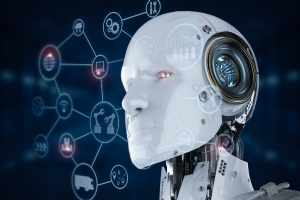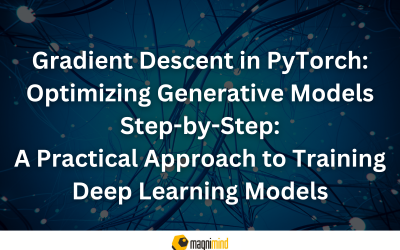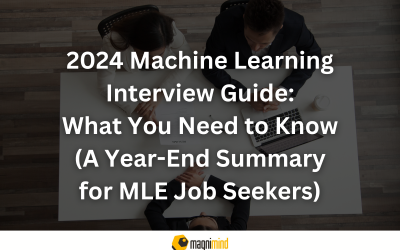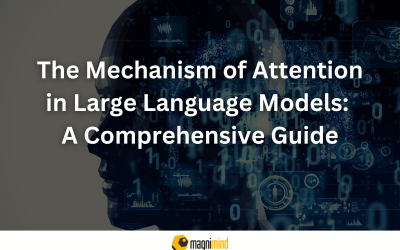Imagine if a robot could think on its own! How would it determine the appropriate course of action, in what situation would it execute a rotation, for instance, how would it evade obstacles? For robots, the problem of making the right choice is analogous to a puzzle, and seeking an answer to this problem, they use something known as Markov models. With the help of these models, robots can perceive the environment, forecast events, and determine the most appropriate behaviour almost like a map and compass that are always on hand.
We’ll examine the algorithms further in order to grasp how the tools integrate into interaction processes. The latter are MDP, which assist a robot in making choices concerning activities. The second category is HMM, which enable the robot to ‘vision’ places which it was unable to see. We’ll also explore why probabilities are key in helping robots plan paths safely and accurately. Ready to see how robots make their moves? Let’s explore Markov models!
How Do Markov Models Work?

Markov models work through a series of steps, using probabilities to help a robot guess what might happen next. This is essential for robots that need to navigate tricky paths or change their plans quickly, especially when they can’t “see” everything around them.
With Markov models, robots can “learn” from past moves and make decisions, even when they don’t have all the information—just like how we might decide to turn down a road based on signs, even if we can’t see the destination.
Markov Decision Processes in Robotics
When it comes to making decisions, robots can’t depend on instinct like we do (this is a big difference). Instead, they use Markov Decision Processes (MDP) which are similar to decision trees that guide their actions step-by-step. However, these processes work differently, because they calculate the best possible choice at each moment. Although robots are smart, they lack the intuition that humans have.
What Are Markov Decision Processes (MDPs)?
MDP represents a math model of making decisions where some state transitions are stochastic (due to random events — such as rolling the dice) and/or controlled by an agent (in our case, robot). While this does simplify things, it allows the robot to determine what action should be performed in any situation. This is done by looking at its current environment and its goals.
MDPs consist of four key components:
- States (S): These represent all the possible situations a robot can be in. For example, a robot could be in a room or performing a task.
- Actions (A): The robot has several choices it can make: it can move forward, turn left, or (even) pick up an object.
- Transitions (T): These describe how actions affect the robot’s state. For example, moving forward might change the robot’s location from one room to another.
- Rewards (R): The robot receives rewards for taking specific actions. A higher reward indicates a more desirable action or outcome, such as completing a task successfully.
How MDPs Help Robots Make Decisions
However, robots in the real world often have to deal with uncertainty. They cannot know precisely the outcomes of when they do one action or another. This is resolved with MDPs, which factor in the probabilistic nature of a robot decision-making process i.e. which actions are likely to lead to certain results?
MDPs take into account the different probabilities of some states and all actions in them to allow for optimal decision making by a robot in order to maximize rewards over long time horizons. Example — In a maze robot may try to choose between different paths and check the path that gives it highest probability of reaching its goal.
Real-World Applications of MDPs in Robotics
MDPs are popular for tasks such as robot path planning and robotic navigation. Following this word of caution, here are some pragmatic instances
- Autonomous Vehicles: MDPs allow self-driving cars to make safe choices on the road by analyzing every decision (to turn, stop or accelerate) under the present state of traffic so they remain in control at all times.
- Delivery Robots: To find the optimal way of delivering packages while conserving energy and avoiding obstacles, these robots use Partially Observable Markov decision processes (MDPs).
- Robotic Arms: MDPs are used to teach robots on an assembly line, allowing them to identify which tool and motion chain should be employed to accomplish a specific task in a precise manner.
Hidden Markov Models for Robot Navigation
A Hidden Markov Model (HMM) is a special case of the Markov model. A Markov model, however, assumes that the current state is fully visible to the observer (or agent), whereas an HMM tackles situations where the state is hidden/missing/partially observable. In other words, the robot may not always know its exact position or environment due to incomplete sensors or uncertain conditions.
In an HMM, the robot’s state is hidden, meaning it can only observe outputs that give it indirect information about the environment. These observations are used to make inferences about its current state, improving its ability to navigate and make decisions.
How HMMs Improve Robot Navigation
Hidden Markov Models are one of the best choice to use in the case of robot navigation when dealing with observation uncertainty or degree of failure as the sensor data are not sufficient to get all movements required for successful movement. This could be due to environmental factors, such as a robot walking in a dark room where there may not always be visual inputs available.
Using an HMM, it can interpret sensor readings (like motion or sound) and estimate its hidden position.
HMMs help robots:
- Estimate unknown states: By interpreting sensor data, robots can make educated guesses about where they are, even if they can’t see everything clearly.
- Adapt to changing environments: Robots can adjust their behavior based on updated information, such as moving faster if they detect an open path.
- Handle uncertainty: By considering the probability of different outcomes, robots can make decisions despite the unknowns in their environment.
Applications of HMMs in Robotics
HMMs are commonly used in:
- Robots and Speech Recognition: Ever imagined giving your robot voice commands? Robot voice command capabilities rely on HMMs to understand spoken instructions, especially when the audio is noisy or pronunciations are not clear.
- Detection and mapping: In cases where GPS or other sensors are not available for localization of the robot, HMMs may be used to estimate its location.
- Object Tracking (Evaluating moving objects): By using cameras and other sensors, robots can track the direction of movement for any generally available article in nature utilizing HMMs.
Probabilistic Models in Autonomous Robotics
Probabilistic models in robotics are tools that can assist robots and robot designers in making decisions or choices when faced with uncertainty and/or randomness of sensory information. While in deterministic models the robot applicably consistently acts a certain way, hence always having her future defined and solved for; probabilistic models accept that not all minutes can be foretold.
These models help robots reason about:
- Sensor data uncertainty: Robots cannot be sure 100% what their sensors are sensing due to all sorts of that comes into play, and so yes probabilistic models help factor those chances.
- Action randomness: The result of a robot action is not always determinable, but probabilistic models can predict the expected outcome.
- Environmental changes: The robot may not be aware and does not know how its environment is changing, but with probabilistic models it can prepare for any case.
Why Probabilistic Models Matter for Autonomous Robots
In autonomous robotics, where robots must function without human intervention, probabilistic models are crucial because they allow robots to:
- Make decisions under uncertainty: Robots can handle situations where sensor data is noisy or incomplete, and they can still take appropriate actions.
- Improve performance over time: By continuously updating probabilities, robots can learn from their experiences and improve their decision-making skills.
- Optimize task completion: Robots can plan and execute tasks with a higher degree of efficiency, even in uncertain or unpredictable conditions.
Robotic Path Planning Using Markov Models
Path Planning is the method of figuring out the best path a robot takes from its initial position to its end point. Designing an accurate model that predicts a point cloud is crucial for autonomous vehicles, drones, or warehouse bendable robots. The robot has to take account of many factors like an obstacle, consumption of energy and time taken etc.
How Markov Models Can Help Plan Optimal Robot Paths
Path planning can be described using Markov models, and the process is known as Markov Decision Processes (MDPs), in which radios are given for various paths or actions. It means that the robot is capable to assess its position, possible routes and the expected results of any performing phase.
So here is what it looks like in practice:
- The robot first defines a state space, representing all the possible locations and configurations.
- Then, it considers potential moves (i.e., driving straight; making a left turn; etc.).
- For any action the robot wants to perform—move left, avoid an obstacle, climb up a step—the robot weighs the relative successes and failures of that action, factoring in obstacles and terrain.
- The robot chooses the best path in such a way that highest of option probability at that time (goals), hits, it can be either reaching destination quickly or avoiding obstacles.
Markov Chain: A Simple Approach to Understanding Sequences
In terms of complexity, a Markov Chain is an MDP simplified to the degree that there are no available actions. It is a chain of connected events where each event has the probability conditional only to the previous state, not the entire history. Alternatively, a Markov Chain is the assumption that future events only rely on what state each element is currently in, regardless of how it got to that point.
Lets take an very example of robot moving on a grid. However, if the robot is in here and moves to there… then that transition only depends on where it currently is, not how it got there.
Markov Chain vs. Markov Decision Process
What differentiates a Markov Chain from a Markov Decision Process is the presence of choices. A Markov Chain is a series of probabilistic states where there are no choices involved while in a Markov Decision Process, we make the robot choose the best action to accomplish its aim.
Here’s a breakdown:
- Markov Chain: Focuses on transitions between states, with no actions taken.
- Markov Decision Process: Involves transitions between states where the robot actively selects actions that maximize rewards or minimize costs.
Markov Chains in Robotic Motion
When the robot has to move from one state to another, but no decisions need to be made, then Markov Chains are used for modeling the robotic motion. Some examples include:
- Motion Control: In simpler robots or devices, Markov Chains can describe a robot’s movement between fixed locations, such as turning on a conveyor belt or switching between different speeds.
- Sensor Data Interpretation: When robots receive sensor input (e.g., readings from cameras or LIDAR), Markov Chains can help predict the next likely sensor reading based on the current state of the robot.
Hidden Markov: Uncovering Hidden States in Robotics
The most important observation is that in many real-world situations, the true state of the robot will not actually be directly observable. The nature of this relationship leads to a Hidden Markov Model (HMM) because the robot state is “hidden” but observable outputs or indications exist, providing a window into that state.
For example, consider a robot navigating through a foggy environment. It can only sense limited data—such as distance to obstacles—but it cannot directly “see” the terrain or its exact position. In such cases, the robot uses HMMs to infer its state from the available sensory information, which can be noisy or incomplete.
How Hidden Markov Helps Robots in Unknown Environments
HMMs have the significant advantage as compare to visible or random stochastic model as they incorporate probabilities to make sense of incomplete or imperfect data. HMM (Hidden Markov Models) for Decision Making Using HMMs, robots can take decisions even when it does not have a complete information of its environment.
Here’s how robots use HMMs:
- Sensor Data: The information supplied to the robot from any of its sensors (temperature, distance, sound etc.).
- Hidden State Inference: Using these inputs, the probability that the robot is in a hidden state (say near some obstacles or in open space).
- Decision Making: The robot uses this information to make decisions about where to move or what action to take next.
How Hidden Markov Helps in Robotics
- Robotic Navigation: Robots moving through unknown environments (e.g., dark rooms, maze-like areas) can use HMMs to infer where they are and how to best navigate.
- Speech Recognition: In robots with voice command functionality, HMMs allow them to “understand” and respond to spoken commands despite background noise or unclear speech patterns.
- Robotic Exploration: Robots exploring new terrains (e.g., search and rescue robots) use HMMs to infer hidden obstacles or hazards that aren’t immediately visible to their sensors.
Markov Decision: The Key to Smart Robot Behavior
The Markov Decision Process (MDP) lies at the core of many autonomous robotic systems. MDPs give the possibility to combine the likelihood nature of Markov Chains with decision making of robotics, which allow robots make decisions lead them to good outcomes with complex environment.
A long set of requirements has been addressed with paths that robots go through to balance those complicated factors towards competing dimensions along the axes of time and resources versus risk exposure to an uncertain environment, specifically Markov Decision Models. From a robot exploring a maze to another one cleaning the room to yet another doing complex assembly work, MDPs guide the robot on what action it should take at each step.
Wrapping Up: The Future of Robotics and Markov Models
Markov models transformed how robots decide, navigate through the environment and perform other complex tasks. MDPs and HMMs form the basis for a particle filter-based use of early MDPs that can cope with uncertainty, making real-time optimal decisions for robots.
Moving forward, these are pouring a lot of gas in the tank and making things much more capable for robots to do in an manner that requires less human assistance. And as robots get more sophisticated, probabilistic models will be key to making them work better than we ever could—as if they are a part of the same world.



